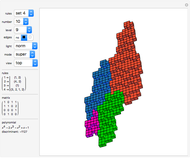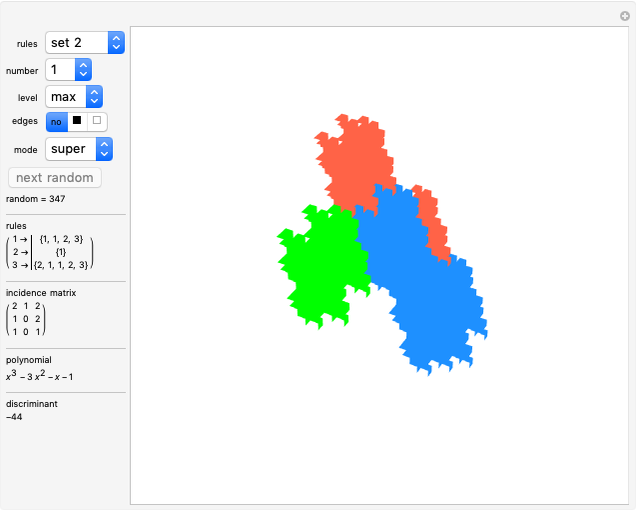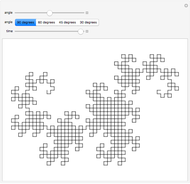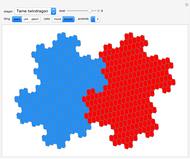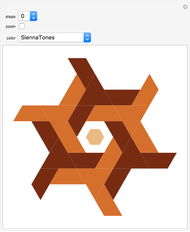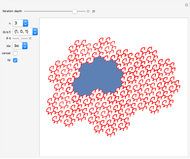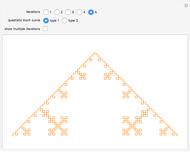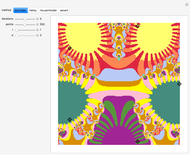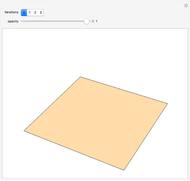Fractal Curves Generated by the Sum-of-Digits Function

Requires a Wolfram Notebook System
Interact on desktop, mobile and cloud with the free Wolfram Player or other Wolfram Language products.
Fractal-like curves are generated by the sum-of-digit function for a given base  with two additional parameters
with two additional parameters  and
and  . In some special cases, these curves reduce to known fractals; for example, when
. In some special cases, these curves reduce to known fractals; for example, when  and
and  , the curve is a scaled version of the famous Koch curve. For general parameters
, the curve is a scaled version of the famous Koch curve. For general parameters  and
and  , the curves can take on a remarkable and largely unpredictable variety of shapes, from distinctive geometric shapes to fractal-like patterns to random clouds exhibiting no apparent pattern.
, the curves can take on a remarkable and largely unpredictable variety of shapes, from distinctive geometric shapes to fractal-like patterns to random clouds exhibiting no apparent pattern.
Contributed by: Adithya Swaminathan, Dimitrios Tambakos and A. J. Hildebrand (June 2021)
(Based on an undergraduate research project at the Illinois Geometry Lab in Spring 2021)
Open content licensed under CC BY-NC-SA
Snapshots
Details
Let  be the base-
be the base- representation of
representation of  . The the sum-of-digits function of
. The the sum-of-digits function of  in base
in base  is defined to be
is defined to be  .
.
The curves shown in this Demonstration are constructed as follows. Fix an integer  and two parameters
and two parameters  and
and  , and let
, and let
 .
.
Let  be the polygonal curve that starts at the origin and whose steps are unit vectors in the direction of the angles
be the polygonal curve that starts at the origin and whose steps are unit vectors in the direction of the angles  ,
,  . Thus,
. Thus,  is the infinite curve obtained by connecting the partial sums
is the infinite curve obtained by connecting the partial sums
 ,
,  ,
,
interpreted as points in the complex plane (with the empty sum interpreted as  ).
).
There are several special cases that are of particular interest:
• When  and
and  , the curve is a scaled version of the Koch curve [1]. The point at step
, the curve is a scaled version of the Koch curve [1]. The point at step  is
is  , where
, where  is the Thue–Morse sequence, defined by
is the Thue–Morse sequence, defined by  if the sum of binary digits of
if the sum of binary digits of  is even, and
is even, and  otherwise.
otherwise.
• When  ,
,  is an integer and
is an integer and  is congruent to
is congruent to  or
or  modulo
modulo  , the curve is periodic and represents a finite polygonal curve that can be explicitly described [2].
, the curve is periodic and represents a finite polygonal curve that can be explicitly described [2].
• When  , the angles
, the angles  reduce to
reduce to  and so do not depend on the sum-of-digit function. The resulting curves are known as curlicue fractals [3].
and so do not depend on the sum-of-digit function. The resulting curves are known as curlicue fractals [3].
• When  and
and  are integers, the curve
are integers, the curve  encodes the behavior of the sum-of-digit function
encodes the behavior of the sum-of-digit function  , with
, with  restricted to an arithmetic progression modulo
restricted to an arithmetic progression modulo  , in residue classes modulo
, in residue classes modulo  [1, 4].
[1, 4].
• For general parameters  and
and  , the behavior of
, the behavior of  is more mysterious, and very little is known of such cases.
is more mysterious, and very little is known of such cases.
References
[1] J.-P. Allouche and G. Skordev, "Von Koch and Thue–Morse Revisited," Fractals, 15(4), 2007 pp. 405–409. doi:10.1142/S0218348X07003630.
[2] D. H. Lehmer and E. Lehmer, "Picturesque Exponential Sums, I," The American Mathematical Monthly, 86(9), 1979 pp. 725–733. doi:10.1080/00029890.1979.11994899.
[3] F. M. Dekking and M. Mendès France, "Uniform Distribution Modulo One: A Geometrical Viewpoint," Journal für die reine und angewandte Mathematik, 1981(329), 1981 pp. 143–153. doi:10.1515/crll.1981.329.143.
[4] F. M. Dekking, "On the Distribution of Digits in Arithmetic Sequences," Séminaire de théorie des nombres de Bordeaux (1982–1983), Bordeaux: Société Arithmétique de Bordeaux, 1982 pp. 1–12. www.jstor.org/stable/44166422.
Permanent Citation







